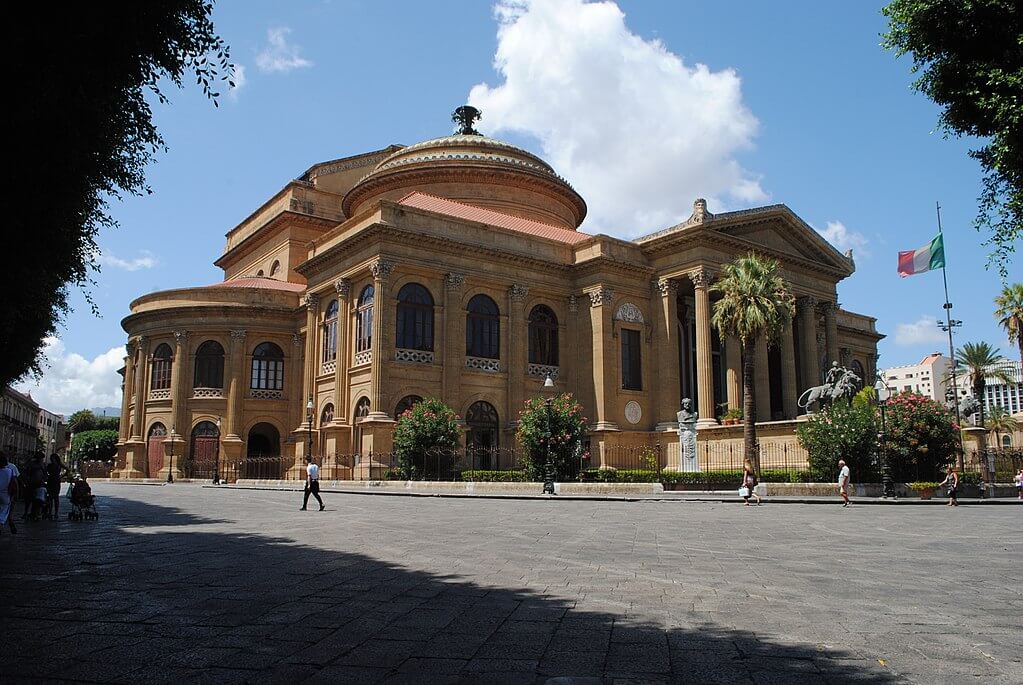

Discover the eventful history of the impressive Palermo Teatro Massimo opera house and embark on a short journey through time. The building breathes a special atmosphere that you will not experience in any other opera house in the world.
by: Adriana Cuffaro | 07 Oct 2021
In 1875, Palermo-born architect Giovanni Battista Filippo Basile began construction work on Italy's largest opera house. The Teatro Massimo is considered his architectural masterpiece, partly because of the imposing portico at the entrance.
Here Giovanni Battista Filippo Basile gave free rein to his passion for the Corinthian order. This type of column arrangement is one of the five classical column orders whose origins lie in antiquity.
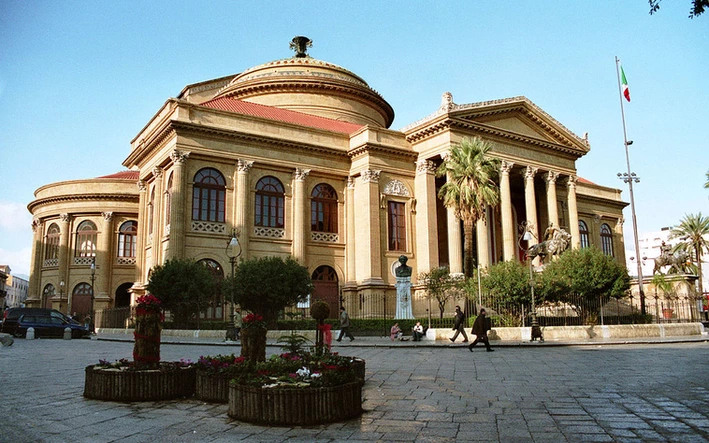
Basile's architectural style can be classified as historicism. This style combines elements from a wide variety of architectural epochs and skillfully blends them together. While the entrance area of the Palermo Teatro Massimo with its monumental staircase and portico is reminiscent of ancient Greek temples, the Sala Grande with its approximately 1,300 seats impresses with opulent baroque stylistics.
Giovanni Battista Filippo Basile did not live to see the completion of his life's work. His son Ernesto Basile completed the opera house in 1897.
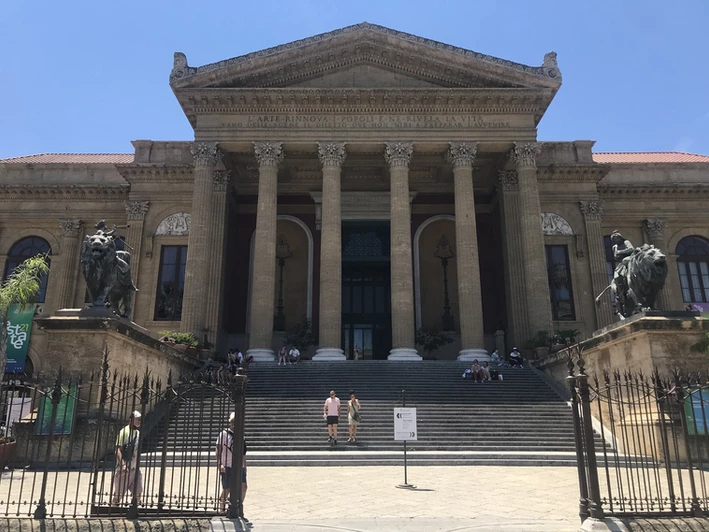
The Sala Grande is the heart of the house. This is where the Palermo Teatro Massimo was ceremoniously opened on 16 May 1897 with Verdi's opera "Falstaff". During your visit, let your eyes wander through the hall. You will notice meticulously executed details everywhere, be it on the galleries, the stage enclosure or in the fresco of the impressive dome that arches over the hall.
It not only provides the opera audience with excellent acoustics. It is also technically sophisticated: Its movable iron structure Its flexible iron structure compensates for shifts caused by temperature fluctuations.
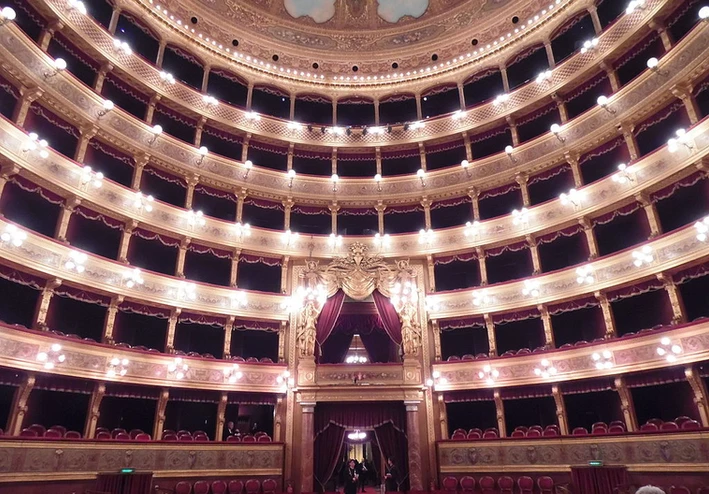
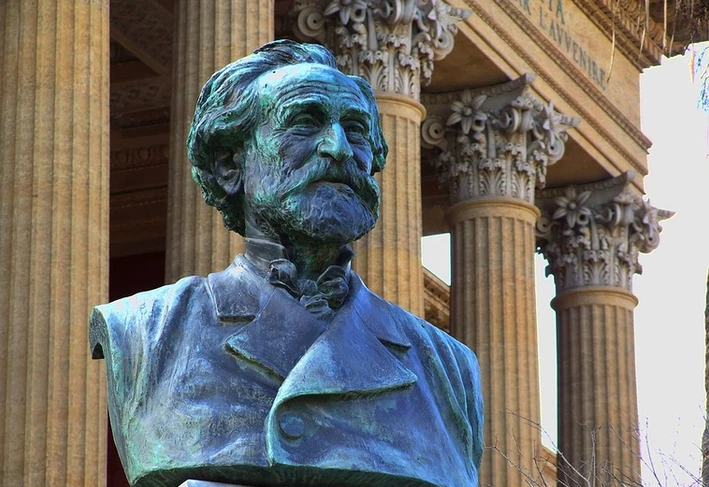
Your tour of the Palermo Teatro Massimo will naturally take you to the main hall. But this is not the only impressive room of the opera house. Giovanni Battista Filippo Basile designed his most important building thoughtfully. Therefore, in addition to the Sala Grande, he created several smaller halls, which still serve as exclusive retreats and can be rented for meetings, private parties or conferences.
The Palco Reale, or "Royal Stage", is a mahogany-lined mirrored room with a magnificent Murano chandelier at its centre. on the ceiling. Pause for a moment and take in the noble décor. Truly royal!
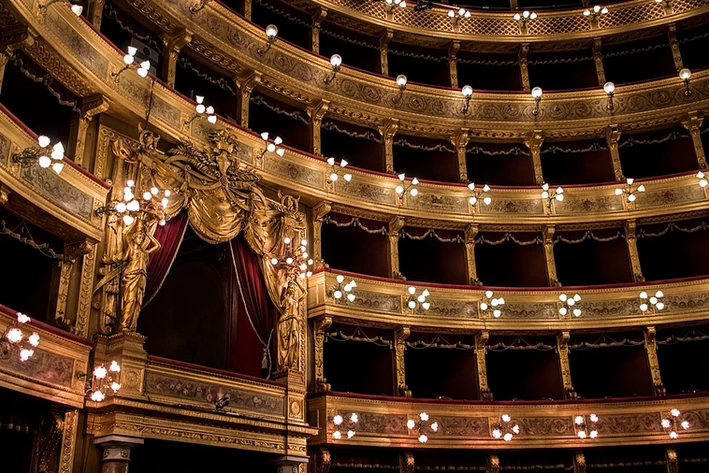
The Sala Pompeiana originally served as a retreat and smoking room for the aristocratic male opera guests. Thanks to its circular design, the Sala Pompeiana has excellent acoustics. Try it out for yourself - the closer you get to the centre of the hall, the more intense the sound becomes!
Be sure to take another look at the Palco Bellini. This exclusive séparée was reserved for members of the Bellini Club during the opening of the opera season. of the Bellini Club during the opening of the opera season. The séparée has only 18 seats. In the adjoining living room, people met for a chat or a drink.
To visit the Palermo Teatro Massimo, you do not need tickets for a performance. The house can be visited regularly. Stroll down the grandiose staircase under the portico into the spacious foyer and feel like the star of an elegant gala. like the star of an elegant gala. Then buy your ticket and explore the premises of Europe's third largest opera house.
Would you have thought that an opera house could be a historical symbol of resistance against the Mafia? Palermo's Teatro Massimo enjoys this extraordinary reputation. In 1974, the theatre was "provisionally" closed. The reason: the Sicilian Mafia had Palermo and its authorities firmly in its grip. This also affected the building policy, which was marked by corruption.
It was only under Palermo's long-time mayor Leoluca Orlando, a determined fighter against the Mafia, that the opera house was reopened in 1997 - just in time for its 100th birthday. Once again, a Verdi opera was staged for the occasion, this time "Nabucco".
Since then, the Palermo Teatro Massimo has been regarded as a symbol of political and cultural resurrection and thus as a bulwark against the machinations of the Mafia.
Speaking of the Mafia: If you are a film fan, you will be pleased to get a taste of Hollywood flair during your visit to the opera house. Francis Ford Coppola shot the final sequence of "The Godfather - Part III", in the stairwell and in the Sala Grande, accompanied by the sounds of Pietro Mascagni's opera "Cavalleria rustica".
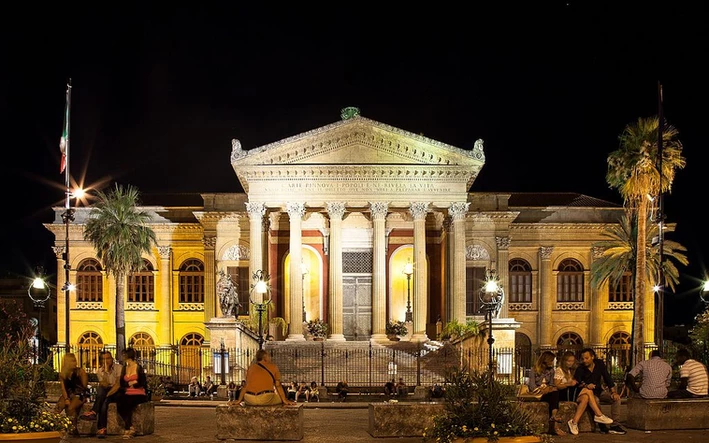
Hollywood feeling, style pluralism, living Italian history: even without an opera performance, a visit to the Palermo Teatro Massimo offers pure excitement. Don't miss this jewel on your visit to Palermo.

Many travellers want quality accommodation with an authentic atmosphere. At Boutique BnB Dolcevita we offer modern rooms and warm service so you can feel like a local for a while.
More info on the Boutique BnB Dolcevita